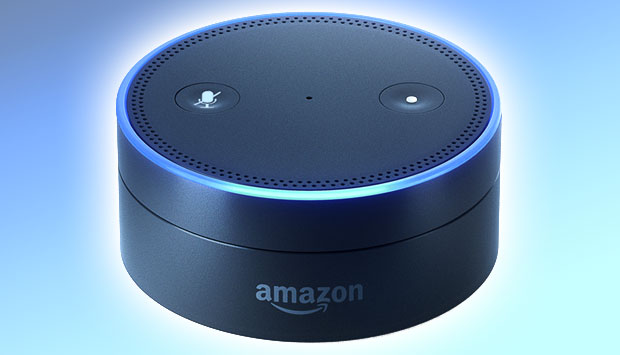Amazon on Thursday announced two products, Echo Dot and Amazon Tap, that extend the range of the Alexa-enabled home automation products anchored by the company’s Echo device, which uses voice recognition to manage routine tasks.
The Echo Dot is a small, hands-free device that uses the same far-field voice-recognition technology as Amazon Echo.
It can connect to home speakers via Bluetooth or with an audio cable, and it lets users control their home stereo systems with voice commands.
It also can be used as a voice-controlled assistant to manage other smart-home devices, including lights, thermostats and electrical switches, or it can be placed in the bedroom for use as an alarm clock.
Amazon Prime members can order the device for US$89.99 via Alexa Voice Shopping. Existing Amazon Echo or Amazon Fire TV customers can order it by saying to those products, “Alexa, order an Echo Dot.” Echo Dot cannot be ordered via the regular Amazon website or on the company’s shopping apps.
Once the device has sold out, it will no longer be available for order.
Amazon Tap is an Alexa-enabled portable Bluetooth and WiFi speaker that works with the Alexa voice-recognition system to carry out various tasks, such as ordering pizza and getting news updates and music from Pandora, Spotify or other services.
The speaker, which will be released March 31, is available for preorder for $129.99.
Advances Limits of Echo
Both products, while addressing separate needs, help make up for shortcomings in the Amazon Echo and Alexa voice services, said Charles King, principal analyst at Pund-IT.
“The Echo Dot is likely to be used by consumers who want to extend the range of existing Amazon Echoes, resulting in what will effectively be voice-activated wireless intercom systems,” he told TechNewsWorld.
The case for the product is a little fuzzy, King said, but he can see a customer using it to order an Uber pickup while packing bags, rather than walking into the main room and using the Amazon Echo.
“The Echo Dot seems more interesting since it’s both portable and addresses concerns that many people voiced about the intrusive listening capabilities of the Amazon Echo,” he added.
The option of engaging or disengaging the device manually may allay concerns of some customers and privacy wonks about Amazon’s new tool following you around the house virtually, King noted.
Somebody’s Watching Me
Apple dealt with similar concerns with Siri, particularly when it refused to disclose the use and storage of collected voice command data. IBM banned the use of Siri at work in 2012 over concerns about the collection of proprietary information, King noted.
Amazon is trying to extend Alexa’s range so that users can have a connected house, instead of just one connected room, said Rebecca Wettemann, vice president of research atNucleus Research.
“Users that appreciate the benefits of Alexa — hands free, voice-enabled simple commands and the ability to quickly order things that Alexa knows about — are likely to see advantages,” she told TechNewsWorld.
Some of the data mining that Amazon engages in today, such as using past purchases to suggest potential new purchases from the website, will make some customers wary about Alexa’s capabilities to collect personal information, Wettemann warned.
Data collection is becoming ubiquitous with the growing market for the Internet of Things and is only going to raise more privacy concerns, according to Susan Schreiner, an analyst atC4 Trends.
“We live in complex times when it comes to data collection and privacy,” she told TechNewsWorld, “and it’s about to get more thorny with the impending avalanche of IoT products that collect data on a continuous 24/7 basis.”






















































